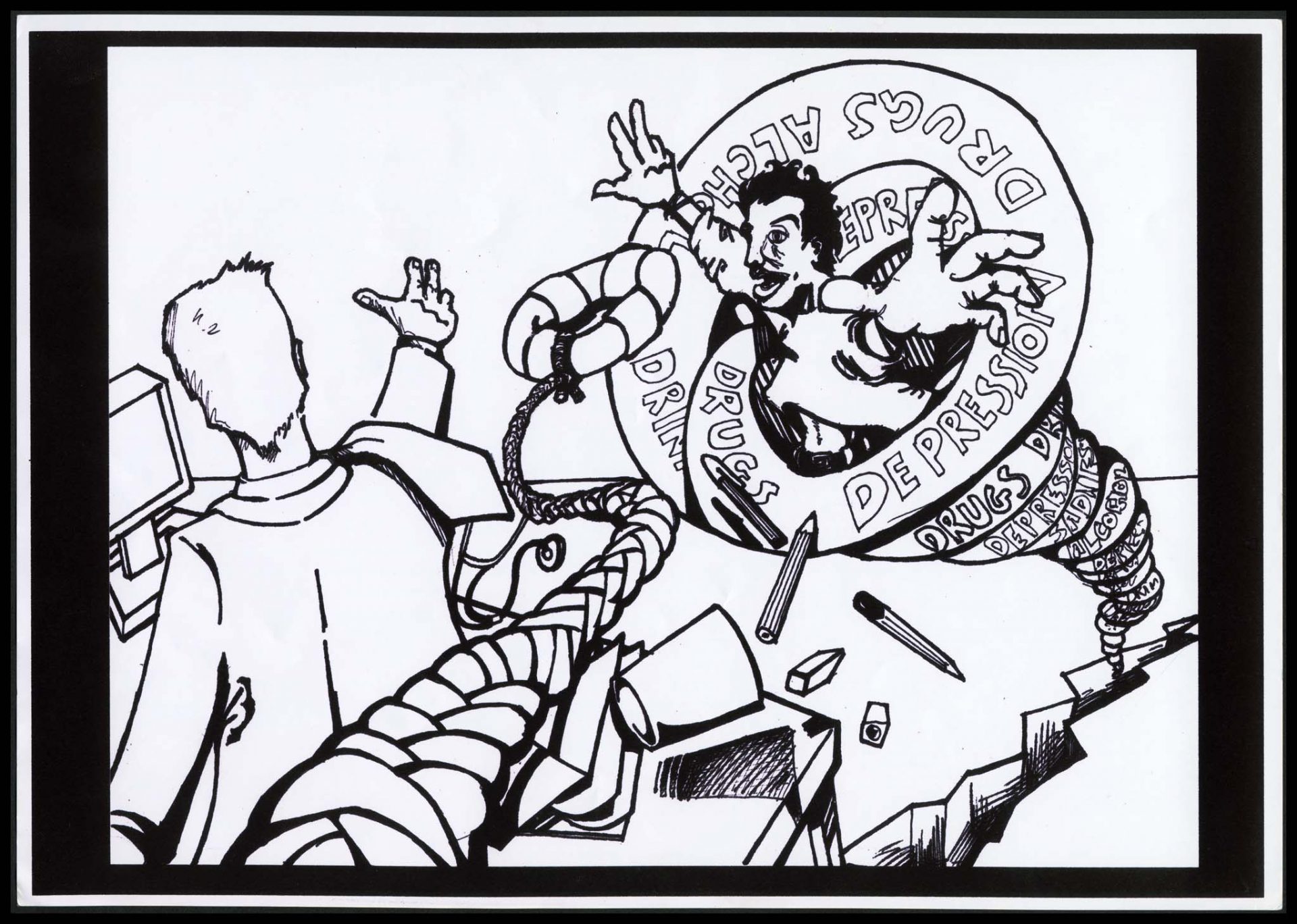Life-Line
Spiralling downwards, surface getting darker
So what if I die, I’m not alive
No job, no money, no-one, nothing
I need to escape, can’t bear to be here
Sinking lower, being pulled under
Pain numbing, wrapped up against the world
Safe now, no thoughts, no worries
Spiralling downwards, surface getting darker
Rising back up, breath drawing in
Don’t want to be here
Just a shell with no soul
Back in the world with no place for me
Out in the open, people avoid me
No more money for comfort
Maybe I can persuade the doctor
Something until I get what I need
They can’t help, nobody can
I’m lost in a whirlpool dragging me down
I’m nothing
One day I will drown
They say they care and want to help me
Someone who cares whether I live or die
They say there are others and others like me
Places to go, people to talk to
Not spiralling downwards
Head above water
Part-time job and someone to call a friend
It might not seem much, but it’s something to live for
A patient I met during GP attachment inspired this piece of writing. The patient came with the intention of getting some Diazepam, however, due to the extremely well conducted consultation by the GP, the patient ended up attending an Addiction Help Centre, which beforehand they didn’t think would be able to support them.
The poem is intended to describe the move through hopelessness and drug abuse through to a positive outlook passing through the ‘simple’ intervention of a caring GP.
The last paragraph is an optimistic look to the future, where the individual has been able to address their addiction and secure employment, plus social interaction, through the help of the drug project.
The accompanying illustration depicts the story. It presents the GP throwing a ‘lifeline’ to the patient who is trapped in a downward spiral, pulling them down. It illustrates how patients must play an active part in helping themselves, but we, as doctors, should be there to facilitate and enable this.

Demonstrates severity of addiction, by using a whirlwind, a dangerous natural disaster, which can destroy people’s lives, leaving them potentially isolated, afraid and unwell. The spiralling nature of the whirlwind is very effective in showing that addiction leads on to cause a huge number of devastating problems, financially, health wise and socially, lives of those affected and those close to them seem to be spiralling out of control. Using only black and white emphasises the bleakness of addiction, how people may feel hopeless and devoid of colour/happiness. However the strong and simple reach from the doctor seems reassuring and positive. The rope has been drawn thickly, appearing strong and shows that there is a way out of whatever sticky situation patients get themselves into. This is really positive incentive to doctors to be the one to hand over the ‘life-line’, and be effective in administrating the care of the patient, as they are being heavily relied on to help recovery of the patient. The likeliness to a patient trusting a doctor with a drowning swimmer trusting a lifeguard is a powerful image. It shows how we as medical students must aim to make patient care our priority in order to be worthy of that trust.
The analogy of the life ring I think is quite an accurate depiction of the role of the patient and doctor in this doctor-patient relationship. The patient is very reliant on the doctor and the doctor has an obvious way of helping the patient.
The knocked over pot of pens and pencils could represent how the doctor has sacrificed in order to help the patient. As he is losing these items which possibly could represent aspects of the doctors personal life that had to be set aside in order to benefit the patient. The doctor’s tie is over his arm this suggests that it is very windy possibly again a suggestion of the difficulties of the doctor’s role.
The doctor is wearing a tie. Largely now in clinical areas ties are either not allowed or have to be tucked in. So perhaps this cartoon is representing a more paternalistic model of healthcare and so the doctor is dressed in a more traditional manner as this is an old approach to the doctor-patient relationship.
Also the doctor does not look like they are directly looking at the patient but instead that their attention is divided between the computer monitor and the patient. This could represent that the doctor needs help from an external source and cannot treat this patient alone – hence perhaps showing the importance of the MDT.